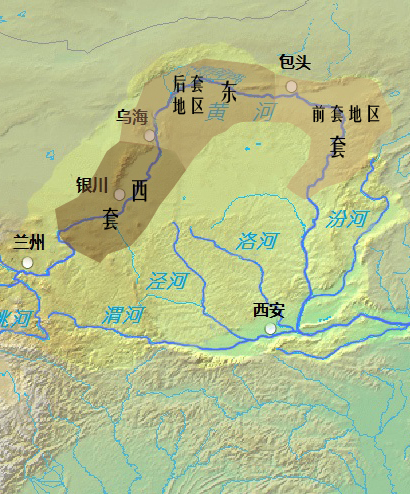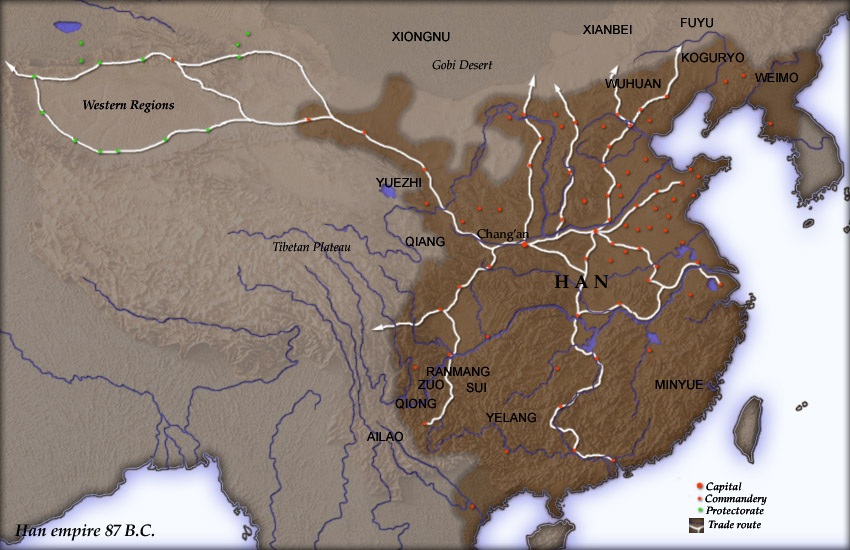|
Song Of The Xianbei Brother
The ''Song of the Xianbei Brother'' () is a popular song of the Xianbei people composed by Murong Hui in 285 AD. It is preserved in Chinese translation and is about the Xianbei chief's regrets for having sent his brother away to the West. The original Chinese translation left the Xianbei word for elder brother (''A-kan'') in the title, which is identical to the Mongolic word for elder brother (''Aqan'' or ''Aghan''). The same word exists in Turkic and Tungusic languages, but the Xianbei are generally considered Mongolic peoples. This would make the song one of the earliest attestations of a Mongolic language. The song was first translated into English in 1939. English translation {, , -valign="bottom" , :Translation in iambic pentameter: :My brother's gone away and not returned. :It is indeed an easy thing to leave :But coming back's the more demanding task. :Though horses kick each other, men should not. :Tis true that strife twixt humans can flare up :As it is plain that ... [...More Info...] [...Related Items...] OR: [Wikipedia] [Google] [Baidu] |
Xianbei
The Xianbei (; ) were a Proto-Mongolic ancient nomadic people that once resided in the eastern Eurasian steppes in what is today Mongolia, Inner Mongolia, and Northeastern China. They originated from the Donghu people who splintered into the Wuhuan and Xianbei when they were defeated by the Xiongnu at the end of the third century BC. The Xianbei were largely subordinate to larger nomadic powers and the Han dynasty until they gained prominence in 87 AD by killing the Xiongnu chanyu Youliu. However unlike the Xiongnu, the Xianbei political structure lacked the organization to pose a concerted challenge to the Chinese for most of their time as a nomadic people. After suffering several defeats by the end of the Three Kingdoms period, the Xianbei migrated south and settled in close proximity to Han society and submitted as vassals, being granted the titles of dukes. As the Xianbei Murong, Tuoba, and Duan tribes were one of the Five Barbarians who were vassals of the West ... [...More Info...] [...Related Items...] OR: [Wikipedia] [Google] [Baidu] |
Duan Tribe
The Duan () was a pre-state tribe of Xianbei ethnicity during the era of Sixteen Kingdoms in China. History The reason the tribe adopted the Han Chinese surname Duan is unknown. Duan Wuwuchen was given in 303 a hereditary title— the "Duke of Liaoxi" —by the Jin dynasty. Even after their tribe was defeated and absorbed by Former Yan, the Duan clan remained honored and powerful, and several Former Yan and Later Yan empresses, as well as important officials, were members of the Duan clan. Chieftains of the Duan Language Shimunek classifies Duan as a "Serbi" (i.e., para-Mongolic) language. Shimunek's "Serbi" linguistic branch also includes Taghbach, Tuyuhun, and Khitan. See also *Xianbei * List of past Chinese ethnic groups *Five Barbarians The Five Barbarians, or Wu Hu (), is a Chinese historical exonym for five ancient non- Han peoples who immigrated to northern China in the Eastern Han dynasty, and then overthrew the Western Jin dynasty and established ... [...More Info...] [...Related Items...] OR: [Wikipedia] [Google] [Baidu] |
Later Yan
Yan, known in historiography as the Later Yan (; 384 – 407 or 409) was a dynastic state of China ruled by the Xianbei people, located in modern-day northeast China, during the era of Sixteen Kingdoms. All rulers of the Later Yan declared themselves "emperors". Rulers of the Later Yan See also * Battle of Canhebei * Wu Hu * List of past Chinese ethnic groups *Xianbei The Xianbei (; ) were a Proto-Mongolic ancient nomadic people that once resided in the eastern Eurasian steppes in what is today Mongolia, Inner Mongolia, and Northeastern China. They originated from the Donghu people who splintered into t ... References {{DEFAULTSORT:Yan History of Mongolia 384 establishments 409 disestablishments Dynasties in Chinese history Former countries in Chinese history 4th-century establishments in China ... [...More Info...] [...Related Items...] OR: [Wikipedia] [Google] [Baidu] |
Western Yan
Yan, known in historiography as the Western Yan (; 384–394) was a dynastic state of China ruled by the Xianbei ethnicity. The dynasty existed during the era of Sixteen Kingdoms, but it is not counted among the 16. It was founded by Murong Hong in 384 in the aftermath of the Former Qin's defeat by the Eastern Jin in the Battle of Fei River, with the stated intent of permitting the Xianbei, whom the Former Qin's emperor Fu Jiān had relocated to Former Qin's capital region after destroying the Former Yan in 370. It initially also was intended to rescue the last Former Yan emperor Murong Wei, until he was executed by Fu Jiān in 385. It was a state that was characterized by extreme political instability and internal fighting, as all seven of its rulers (during a short span of 10 years) died of unnatural causes. After eviscerating the Former Qin, the people of the state abandoned the Guanzhong region and headed east back toward their homeland, but eventually settled down in modern ... [...More Info...] [...Related Items...] OR: [Wikipedia] [Google] [Baidu] |
Former Yan
The Former Yan (; 337–370) was a dynastic state ruled by the Xianbei during the era of Sixteen Kingdoms in China. Initially, Murong Huang and his son Murong Jun claimed the Jin dynasty-created title "Prince of Yan," but subsequently, in 352, after seizing most of the former Later Zhao territory, Murong Jun would declare himself emperor, and after that point, the rulers of the Former Yan declared themselves "emperors". History During the winter of 342, the Xianbei of Former Yan, ruled by the Murong clan, attacked and destroyed Goguryeo's capital, Hwando, capturing 50,000 Goguryeo men and women to use as slave labor in addition to taking the queen mother and queen prisoner, and forced King Gogukwon to flee for a while. The Xianbei also devastated Buyeo in 346, accelerating Buyeo migration to the Korean peninsula. Their capital was Yan (Beijing) in 350, then Yecheng in 357, and finally Luoyang in 364. File:MurongPainting.jpg, Painting depicting a Xianbei Murong archer in ... [...More Info...] [...Related Items...] OR: [Wikipedia] [Google] [Baidu] |
Qiang (historical People)
Qiang () was a name given to various groups of people at different periods in ancient China. The Qiang people are generally thought to have been of Tibeto-Burman origin, though there are other theories. The Tangut people of the Tang, Sung and Yuan dynasties may be of Qiang descent. The modern Qiang people as well as Tibetans may also have been descended in part from the ancient Qiangs. Etymology According to the Han dynasty dictionary ''Shuowen Jiezi'', the Qiang were shepherds, and the Chinese character for Qiang () was thus formed from the characters for "sheep" (羊) and "man" (人), and pronounced like "sheep".Shouwen Original text: 羌:西戎牧羊人也。从人从羊,羊亦聲。 '''' also ... [...More Info...] [...Related Items...] OR: [Wikipedia] [Google] [Baidu] |
Tuyuhun Kingdom
Tuyuhun (; LHC: *''tʰɑʔ-jok-guənʔ''; Wade-Giles: ''T'u-yühun''), also known as Henan () and Azha (; ), was a dynastic kingdom established by the nomadic peoples related to the Xianbei in the Qilian Mountains and upper Yellow River valley, in modern Qinghai, China. History After the disintegration of the Xianbei state, nomadic groups were led by their khagan, Murong Tuyuhun (慕容吐谷渾), to the rich pasture lands around Qinghai Lake about the middle of the 3rd century AD. Murong Tuyuhun was the older brother of the Former Yan's ancestor Murong Hui and elder son of the Chanyu Murong Shegui (慕容涉歸) of the Murong Xianbei who took his people from their original settlements on the Liaodong Peninsula to the region of the Yin Mountains, crossing the Yellow River between 307 and 313, and into the eastern region of modern Qinghai. The Tuyuhun Empire was established in 284 by subjugating the native peoples referred to as the Qiang, including more than 100 different a ... [...More Info...] [...Related Items...] OR: [Wikipedia] [Google] [Baidu] |
Ordos (city)
Ordos ( Mongolian: ''Ordos''; ), also known as Ih Ju, is one of the twelve major subdivisions of Inner Mongolia, China. It lies within the Ordos Plateau of the Yellow River. Although mainly rural, Ordos is administered as a prefecture-level city. Its population was 2,153,638 as of the 2020 census and its built-up (or metro) area made up of Ejin Horo Banner and Kangbashi District was home to 366,779 inhabitants, as Dongsheng District (574,442 inhabitants) is not a conurbation yet. Ordos is known for its recently undertaken large scale government projects including most prominently the new Kangbashi District, an urban district planned as a massive civic mall with abundant monuments, cultural institutions and other showpiece architecture. It was the venue for the 2012 Miss World Final. When it was newly built, the streets of the new Kangbashi district did not have much activity, and the district was frequently described as a "ghost city" by several Western media outlets. Howev ... [...More Info...] [...Related Items...] OR: [Wikipedia] [Google] [Baidu] |
Hetao Plains
Hetao () is a C-shaped region in northwestern China consisting of a collection of flood plains stretching from the banks of the northern half of the Ordos Loop, a large northerly rectangular bend of the Yellow River that forms the river's entire middle section. The region makes up the northern margin of the Ordos Basin, bounded in the west by the Helan Mountains, the north by the Yin Mountains, the east by the northern portion of Lüliang Mountains, and the south by the Ordos Desert and the Loess Plateau (separated by the course of the Ming Great Wall). The Hetao region is divided into two main sections — the "West Loop" () in Ningxia, and the "East Loop" () in Inner Mongolia. The west section includes the alluvial Yinchuan Plain (, a.k.a. Ningxia Plain) around Shizuishan, Yinchuan and Wuzhong, and the Weining Plain () around Zhongwei. The east section is further divided into two parts — the western "Back Loop" (), which includes the Bayannur Plain () around Bayan ... [...More Info...] [...Related Items...] OR: [Wikipedia] [Google] [Baidu] |
Yuwen
The Yuwen ( < Eastern Han Chinese: *''waB-mun'' < *''waʔ-mən''Schuessler, Axel. 2007. ''An Etymological Dictionary of Old Chinese''. University of Hawaii Press. p. 587, 514) is a originated from a pre-state clan of Xianbei ethnicity of Xiongnu origin during the era of |
Wuhuan
The Wuhuan (, < : *''ʔɑ-ɣuɑn'', < (c. 78 BCE): *''ʔâ-wân'' < *''Awar''Schuessler, Axel (2014) "Phonological Notes on Hàn Period Transcriptions of Foreign Names and Words" in ''Studies in Chinese and Sino-Tibetan Linguistics: Dialect, Phonology, Transcription and Text''. Series: Language and Linguistics Monograph. Issue 53. p. 257 of 249-292) were a Proto-Mongolic nomadic people who inhabited |
Murong Hui
Murong Hui (慕容廆, 269 – 4 June 333), courtesy name Yiluo (弈洛), was an Xianbei chief, formally known as Duke Xiang of Liaodong, posthumously honored as Emperor Wuxuan (武宣皇帝). In the Book of Jin, Murong Hui was described as tall, physically strong and having a beautiful appearance. Murong Hui had initially been a Xianbei chief who fought Jin forces during the late reign of Emperor Wu of Jin, Jin's founding emperor, but he submitted as a Jin vassal in 289. Under constant attack by fellow Xianbei chief Duan Jie () of the Duan tribe, he humbly sought peace with the Duan and married one of Duan Jie's daughters. From this union came Murong Huang (in 297) and two of his younger brothers, Murong Ren () and Murong Zhao (). During Murong Hui's rule as tribal chief, the Jin Dynasty's central government was in constant turmoil and eventually collapsed due to infighting and agrarian rebellions, the strongest of which was the Xiongnu state Han Zhao. As a result, ma ... [...More Info...] [...Related Items...] OR: [Wikipedia] [Google] [Baidu] |





